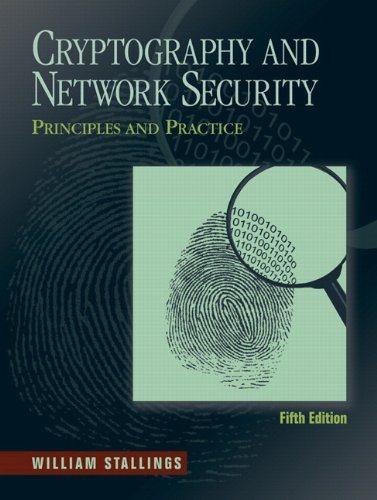A generalization of the Caesar cipher, known as the affine Caesar cipher, has the following form: For
Question:
A generalization of the Caesar cipher, known as the affine Caesar cipher, has the following form: For each plaintext letter \(p\), substitute the ciphertext letter \(C\) :
\[C=E([a, b], p)=(a p+b) \bmod 26\]
A basic requirement of any encryption algorithm is that it be one-to-one. That is, if \(p eq q\), then \(\mathrm{E}(k, p) eq \mathrm{E}(k, q)\). Otherwise, decryption is impossible, because more than one plaintext character maps into the same ciphertext character. The affine Caesar cipher is not one-to-one for all values of \(a\). For example, for \(a=2\) and \(b=3\), then \(\mathrm{E}([a, b], 0)=\mathrm{E}([a, b], 13)=3\).
a. Are there any limitations on the value of \(b\) ? Explain why or why not.
b. Determine which values of \(a\) are not allowed.
c. Provide a general statement of which values of \(a\) are and are not allowed. Justify your statement.
Step by Step Answer:






